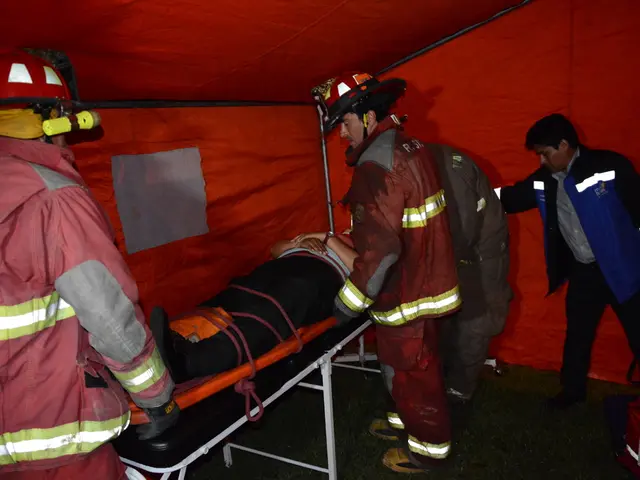The noteworthy increase in lifesaving operations by DLRG in Mecklenburg-Vorpommern
Life-Saving Missions: DLRG Rescues 113 People in the Northeast Region - Emergency responders DLRG successfully rescue 113 individuals in the northeastern region.
The German Life-Saving Association (DLRG) witnessed a significant jump in rescue missions in Mecklenburg-Vorpommern last year compared to 2023. The Dalley-Divers, or DLRG volunteers, were called to 113 rescue missions, as per their records — a marked raise from 86 deployments in 2023.
A mix of water-based and non-water-based rescue missions
Many of these rescue missions weren't restricted to water. They included responding to heart and circulatory diseases, heart attacks on the beach, and various medical emergencies. The precise number of individuals rescued from drowning wasn't originally disclosed, but it's clear that in some cases, assistance arrived too late: 29 lives were lost in the Baltic Sea, lakes, and rivers in 2024, nine more than in 2023.
The tireless dedication of 3,380 members
In 2024, 3,380 active members, who act as the eyes and ears of safety along the waterlines, put in nearly 282,000 hours of water rescue service. Their combined efforts helped a total of 4,711 people in that year.
Nationwide statistics paint a similar picture
The DLRG reported that nationwide, their lifeguards rescued 1,446 individuals from life-threatening situations last year — a significant uptick from 2023's 1,120 rescues. Among these, 699 people were pulled from the water, compared to 870 in 2023. Unfortunately, at least 411 individuals could not be saved.
The DLRG: A lifeline on a global scale
Established in 1869, the DLRG boasts being the largest water rescue organization globally, with over 627,000 members. Around half of these members are kids and youngsters under the age of 18.
- DLRG
- Mecklenburg-Vorpommern
- Northeast
- Lakes
- Stralsund
- Baltic Coast
- Baltic Sea
- Rivers
What factors could contribute to these rising numbers? (Enrichment Data)
To get a clearer understanding of the upsurge in water rescue operations by the DLRG in Mecklenburg-Vorpommern and across Germany, it's essential to consider various factors that could influence these numbers:
- Weather Conditions: Severe weather events such as storms, floods, or droughts can significantly impact the number of rescue missions required.
- Leisure Activities: Increased participation in water sports or outdoor activities can result in more incidents.
- Infrastructure and Accessibility: Improved rescue infrastructure and accessibility can boost the ability to promptly respond to emergencies.
- Population and Tourism: Areas with rapidly growing populations or high tourist traffic might experience more rescue operations.
By studying these elements and analyzing trends in historical data, more precise insights can be drawn regarding the factors contributing to this increase in rescue operations.
In the context of increasing rescue operations by the DLRG in Mecklenburg-Vorpommern, a deeper analysis is necessary to understand the underlying factors. For instance, the rise in leisure activities such as health-and-wellness, fitness-and-exercise, and even vocational training (like water sports for vocational graduates in fields like EC marine conservation) could be contributing to the increase in water-based incidents. Additionally, advancements in science, particularly in the field of health, may lead to more reports of heart and circulatory diseases, necessitating non-water rescue missions by the DLRG.






